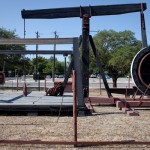StateImpact Texas Hits the Road: Miles and Miles of Texas
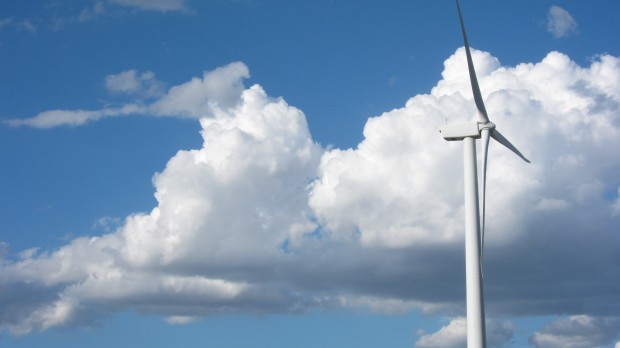
Photo by Terrence Henry/StateImpact Texas
A wind turbine in Sterling county. Texas has more wind power than any other state, and more than most countries.
With Plenty of Turbines and Pumpjacks Along the Way
Over a thousand miles later, StateImpact Texas has returned from our first “Road Show,” a journey that took us from Austin to Midland-Odessa, then to Marfa, and back. Along the way, we heard stories of the drought, the drilling boom, and what everyday Texans think about energy and environment.
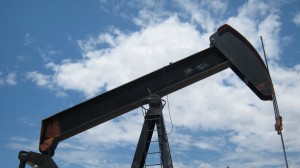
Photo by Terrence Henry/StateImpact Texas
A pumpjack in the Monahans Sandhills in West Texas.
One thing we saw a lot of this trip? Wind turbines and pumpjacks. Hundreds of them. Sometimes pretty close together, which makes for an interesting visual.
Those two icons tell two different stories about Texas energy. One is a victory for renewables, while the other means a continued reliance on fossil fuels.
Take wind: Texas is the nation’s leader in wind energy, with more capacity than any other state, and more than most countries. (You can read more about that unlikely story in our interview with the authors of The Great Texas Wind Rush.) On a late afternoon earlier this week, we passed through the wind fields in the counties of Coke and Sterling, where the turbines were moving at a good pace that day.
But yesterday, on a typically hot Texas August afternoon, as we passed by turbine after turbine on the ridges along I-10 as we traveled from Marfa back to Austin, we noticed many of the turbines weren’t moving much. (Incidentally, we stopped for gas in Ozona, so named in 1897 “for the high quantity of its open air, or ‘ozone’.”)
That’s because in many parts of the state, the wind tends to blow at night, or the peak of winter, and not in the hot summer afternoons when they’re needed most. Those are the times when Texans across the state crank up their air conditioners, stretching the energy grid. More wind farms along the Gulf Coast are popping up, where the wind tends to blow during those peak times. That development — along with new transmission lines to bring wind power more quickly and efficiently from the Panhandle to cities along I-35 — could help wind power become an even bigger part of the Texas energy picture.
Then there’s all those pumpjacks — they dot the landscape in the Permian Basin around Midland-Odessa, a product of a drilling boom that has brought both prosperity and challenges to this part of the state.
And not everyone is happy about it. At our community forum in Odessa Tuesday night, we heard from several residents of Gardendale, a small town outside of Odessa. Here’s how one landowner there feels about the drilling in this neighborhood:
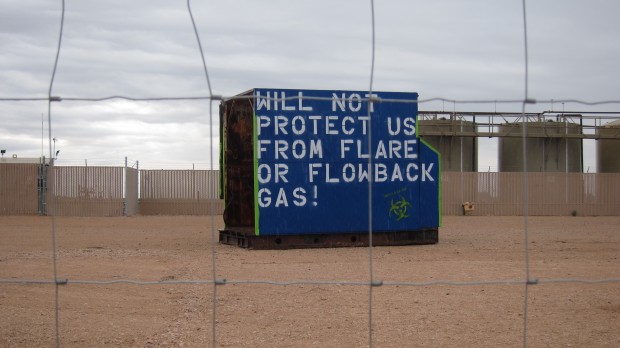
Photo by Terrence Henry/StateImpact Texas
Some locals in the community of Gardendale, outside of Midland-Odessa, aren't happy about the drilling in their neighborhood. One local paints protest murals adjacent to an oil site on a regular basis.
On the prosperity side, more drilling has meant more money. That has helped organizations like the West Texas Food Bank, which has seen donations rise and food insecurity rates drop. But the organization says that one in four children in Ector County and one in five children in Midland County are “still at risk of hunger.” Libby Campbell, executive director of the West Texas Food Bank, told us that the boom has resulted in less affordable housing, resulting in more demand for food aid overall.
When we visited the food bank Tuesday, staff and volunteers were busy putting boxes together for the hungry:
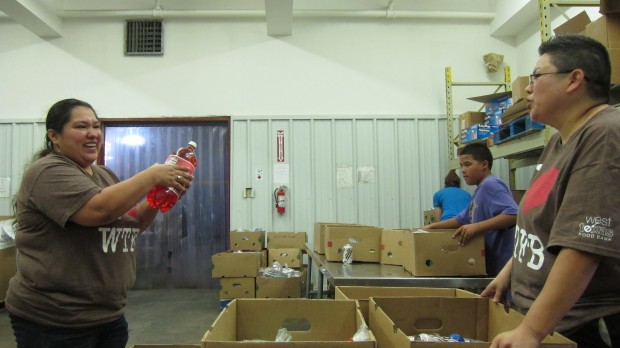
Photo by Terrence Henry/StateImpact Texas
Staff and volunteers prepare food boxes at the West Texas Food Bank in Odessa. "Food insecurity" in the Permian Basin dropped from 2011 to 2012.
Stay tuned for more from our travels next week. And here’s one last photo from the road:
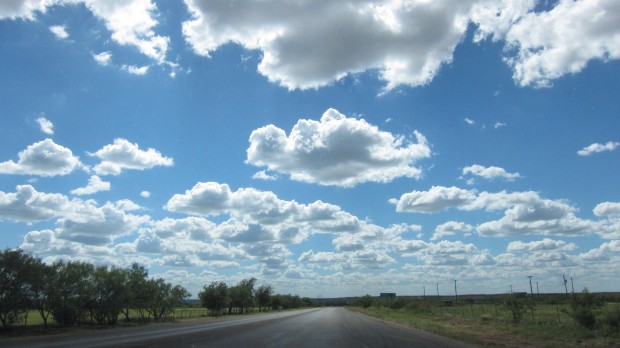
Photo by Terrence Henry/StateImpact Texas
Miles and miles of Texas.
